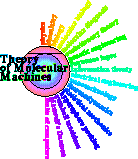
Schneider Lab
origin: 1999 September 22
updated: 2000 March 2
1Jerry Vockley, 2Peter K. Rogan, 1Bambi D. Anderson, 1Jan Willard, 3Ratnam S. Seelan, 3David I. Smith, and 3Wanguo Liu.
Mayo Clinic and Foundation 1Department of Medical Genetics 3Department of Laboratory Medicine and Pathology 200 First Street, SW Rochester, Minnesota, 55905, USA
2Section of Medical Genetics and Molecular Medicine, Children's Mercy Hospital 2401 Gilham Road Kansas City, MO 64108
Address correspondence to: Jerry Vockley, M.D., Ph.D. Mayo Clinic Department of Medical Genetics 200 First Street, SW Rochester, MN 55905 Ph: (507) 284-6984 Fax: (507) 284-4601 e-mail: vockley@mayo.edu
American Journal of Human Genetics 66:356-367, 2000.
Isovaleric acidemia (IVA) is a recessive disorder caused by a deficiency of isovaleryl-CoA dehydrogenase (IVD). We have reported elsewhere nine point mutations in the IVD gene in fibroblasts of patients with IVA, which lead to abnormalities in IVD protein processing and activity. In this report, we describe eight IVD gene mutations identified in seven IVA patients that result in abnormal splicing of IVD RNA. Four mutations in the coding region lead to aberrantly spliced mRNA species in patient fibroblasts. Three of these are amino acid altering point mutations, whereas one is a single-base insertion that leads to a shift in the reading frame of the mRNA. Two of the coding mutations strengthen pre-existing cryptic splice acceptors adjacent to the natural splice junctions and apparently interfere with exon recognition, resulting in exon skipping. This mechanism for missplicing has not been reported elsewhere. Four other mutations alter either the conserved gt or ag dinucleotide splice sites in the IVD gene. Exon skipping and cryptic splicing were confirmed by transfection of these mutations into a Cos-7 cell line model splicing system. Several of the mutations were predicted by individual information analysis to inactivate or significantly weaken adjacent donor or acceptor sites. The high frequency of splicing mutations identified in these patients is unusual, as is the finding of missplicing associated with missense mutations in exons. These results may lead to a better understanding of the phenotypic complexity of IVA, as well as provide insight into those factors important in defining intron/exon boundaries in vivo.
![]()

Schneider Lab
origin: 1999 September 22
updated: 2000 March 2
![]()